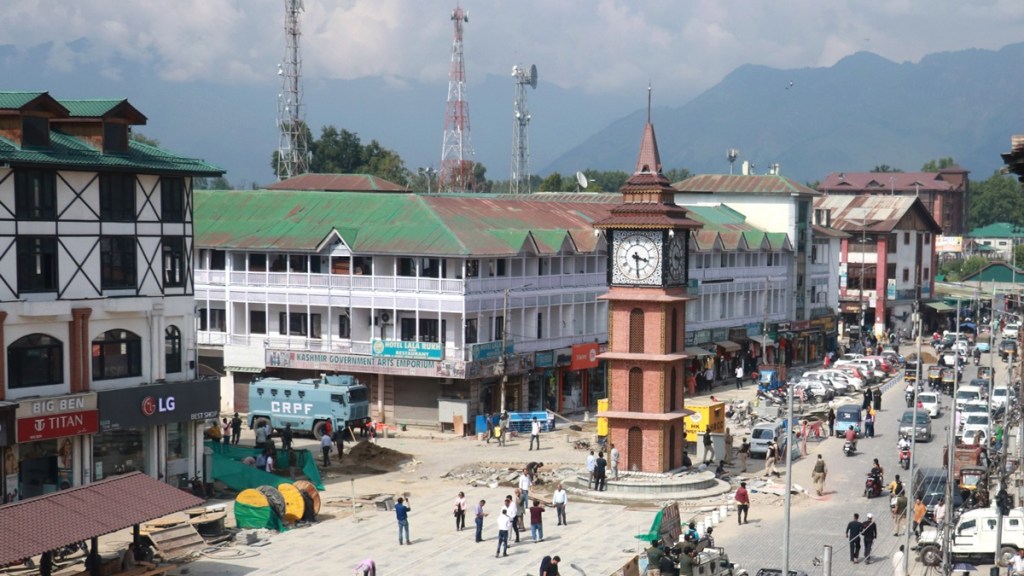By Farooq Wani
The word “tradition” is defined as a “transmission of customs or beliefs from one generation to the next and, none exemplifies this better than India. Our nation’s educational curriculum is designed to inculcate in all of us the important habits of reading and writing, coordinating mind and limbs and developing requisite command over language to achieve an excellent level of understanding to make our past and present relatable.
The USP of India’s 28 States and eight Union Territories is that they present to the world at large a wide variety of culture and tradition, all of which are foundationally based on the principles of tolerance, wisdom, religion and deed.
A land of cultural diversity such as India has thrived through the ages because its people imbibed the sterling qualities of love and protection of heritage, traditional values, and promotion of varieties of religion, music and dance, festivals and textiles, wherein each stream has had a huge impact domestically and globally. None reflects this better than the “Idea of Kashmiriyat”.
It’s a well-known fact that the Kashmir Valley has, through generations, produced great thinkers and spiritual practitioners who articulated and promoted the right way of living, and healthy socio-economic-cultural engagement. Kashmiriyat or Kashmiriyat (as it is spelt and pronounced now) is an off-shoot of this well heeled amalgam of Hindu-Muslim culture, festivals, language, cuisine and clothing.
Rich spiritual, intellectual and cultural traditions have nourished Kashmir. Who can forget legendary personalities like Kshemendra (famed polyglot, poet-philosopher), Kalhana (of Rajatarangini fame) and Acharya Abhinavgupta. They were the ones who germinated the concept of Kashmiriyat-an idea of communal harmony, religious tolerance, cultural diversity and peaceful co-existence.
The term “Kashmiriyat” is said to have been coined only after 1947 to encourage the people of Kashmir to re-develop a “secular identity of their own” which they had unfortunately lost over generations. Unfortunately, this term has been repeatedly misused and often misinterpreted for personal or political gain, taking it away from its “original historical intent and context” of evolving a spirit of cultural and socio-economic co-existence.
Kashmiriyat has always been inclusive. From ancient times, through the Rishi-Sufi Movements (Sheikh Noor-ud-Din or Nund Rishi, Lal Ded, etc.) to modern times, the people of Kashmir are known for their tolerant and conciliatory nature. They strongly believe that these two qualities ensure harmonious relationships and safeguarding local traditions, customs and culture. It also nurtures love for the homeland (Kasheer) and speech (Koshur). Collectively, therefore, Kashmiriyat is a process of adjustment, fusion and assimilation.
No talk of Kashmiriyat can ever be complete without a mention of Sheikh-ul-Alam, or Sheikh Noor-ud-Din, alias Nund Rishi and to him is attributed the title of its “Main Contributor”. Though Kashmir is known as the land of saints, rishis and sages, Nund Rishi is regarded as the first among equals for using his spiritual prowess to undertake social and cultural work with a missionary zeal that has no parallels. No other saint in Kashmir’s long history has ever commanded as much respect across faiths as this one individual, and that remains even today.
His brand of spirituality, humanism and tolerance gained him enduring respect and it was through his sayings that Kashmir’s indigenous culture got linked with Islam. He was a crusader for social justice and peace, a staunch believer in equality of all human beings in the eyes of God; a champion for women’s equality and a critic of the caste system.
Before the advent of Buddhism, the region flourished with the help of Vedic teachings. The period up to the 7th century B.C. was one of great upheaval, whereas the seven or eight centuries that followed saw cementing of the Hindu way of life. It was only in the medieval period (14th century onward) that Islam and Sufism entered the Kashmir Valley and has stayed since.
Repeated and regular socio-cultural transformation has been a way of life for Kashmir. It is a credit to the region and its people that they have accepted different faiths, cultures, customs and food habits, without allowing any compromise of personal identity and individuality.
In a very literal sense, Kashmiriyat literally reflects an evolution of a very special kind of civilisation from the 3rd century B.C. to now, free from orthodoxy and intolerance, and desire for peaceful living and performing good deeds.
The author is Editor Brighter Kashmir, Author, TV commentator, political analyst and columnist.
Disclaimer: Views expressed are personal and do not reflect the official position or policy of Financial Express Online. Reproducing this content without permission is prohibited.


